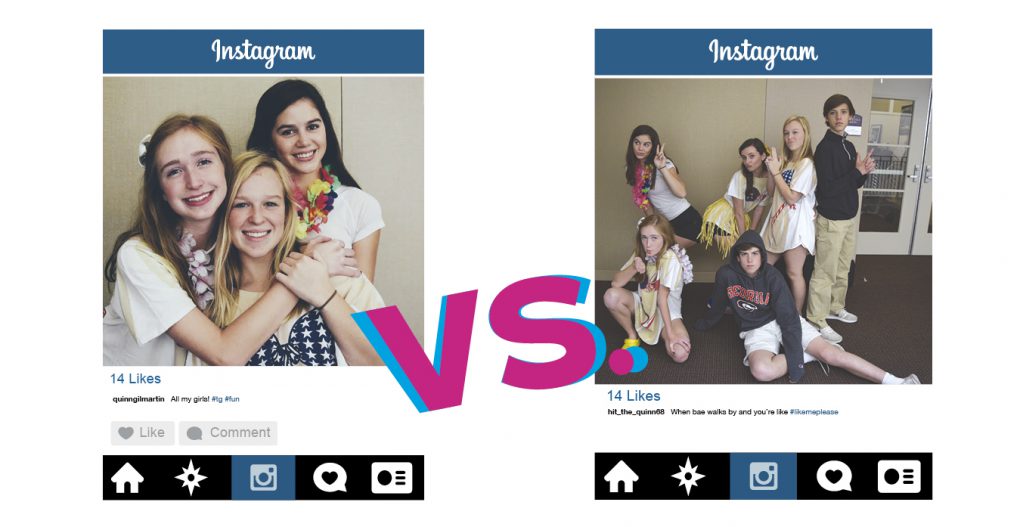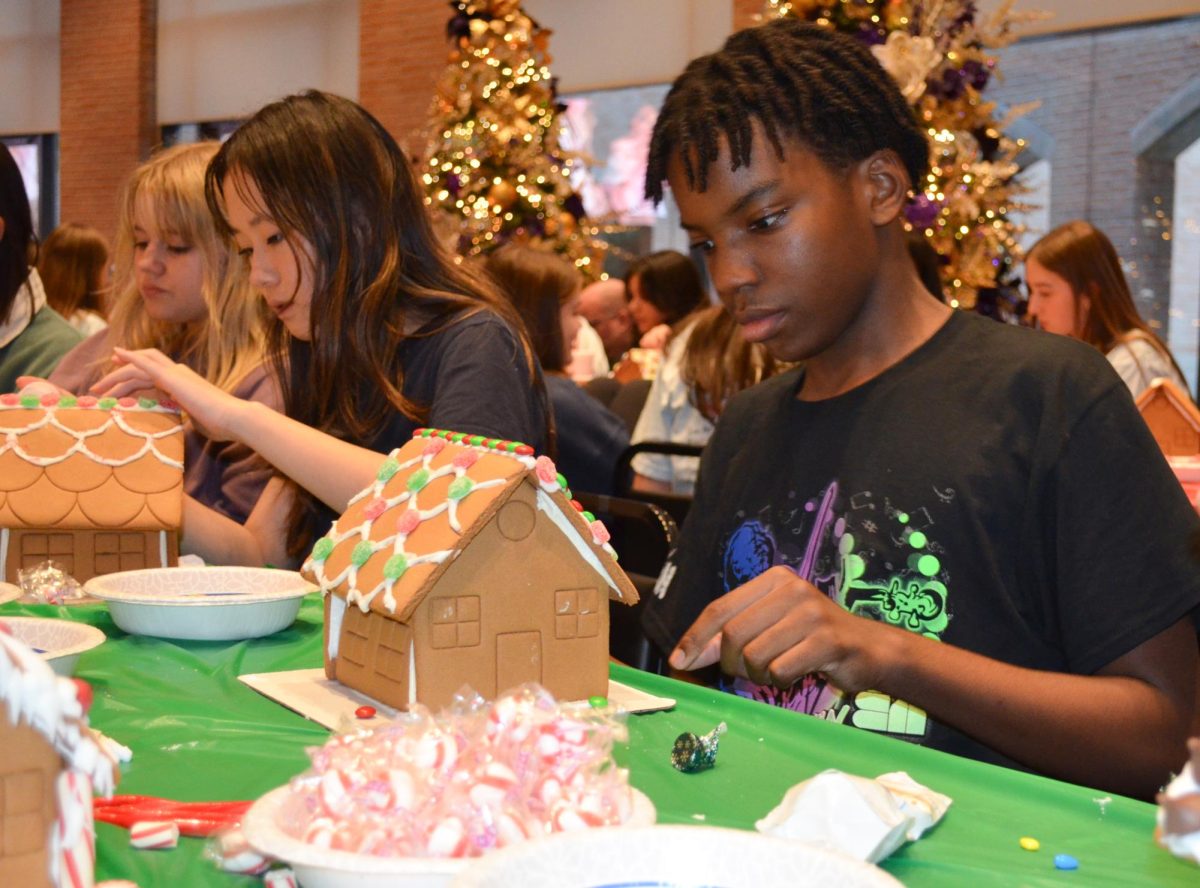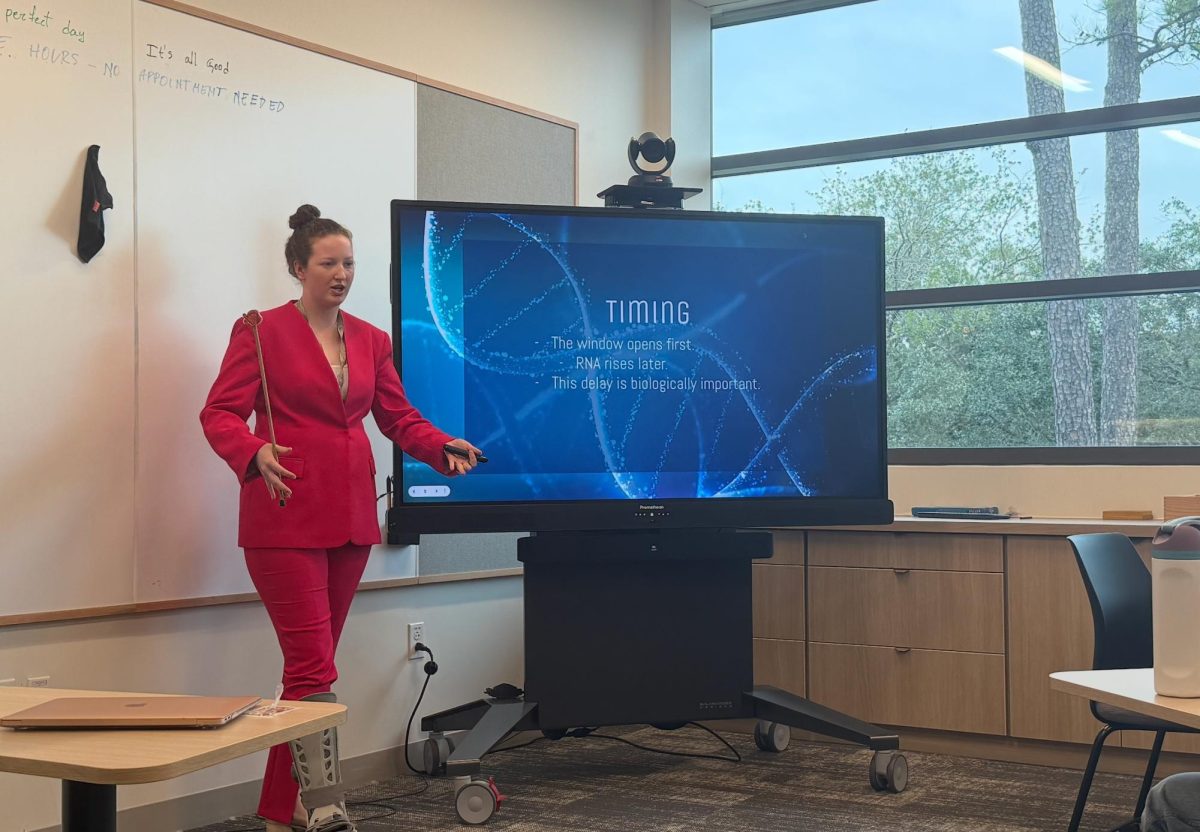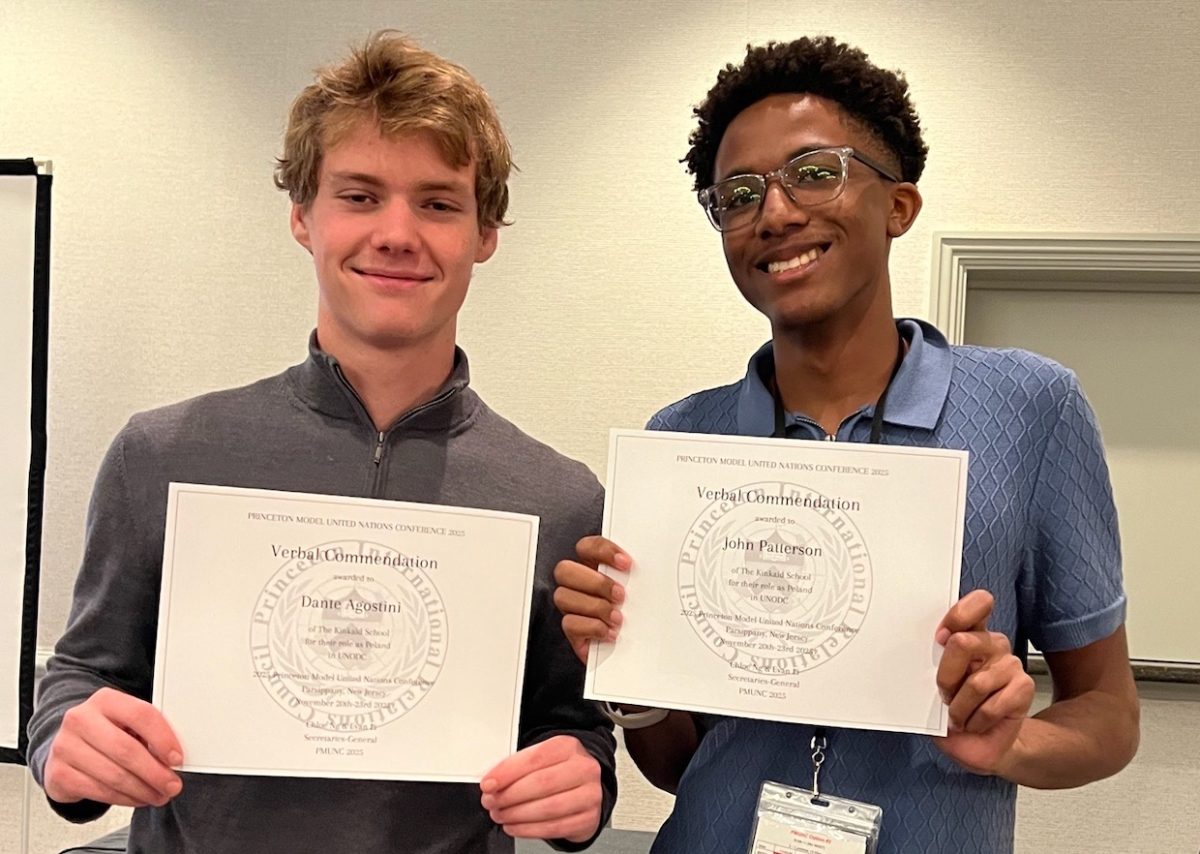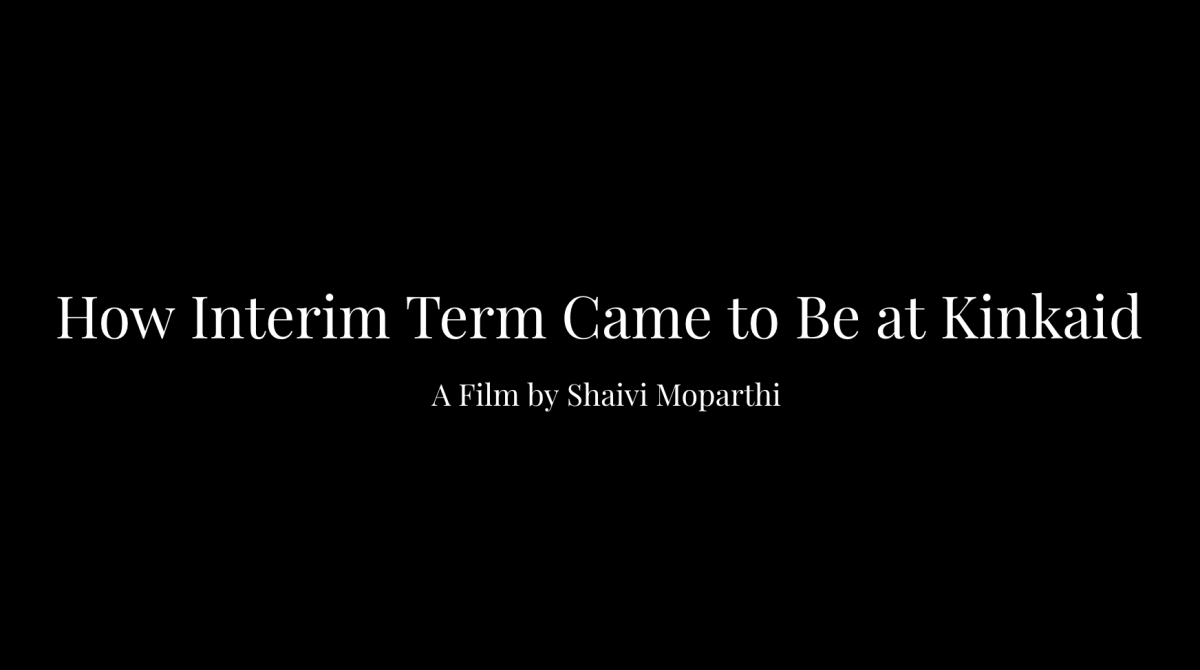Growing number of fake Instagrams spark debate between users and non-user
[dropcap]W[/dropcap]alking through the school halls on any given morning, one can hear murmurs and hushed whispers of girls gossiping about people’s latest finsta posts. Shocked gasps, disapproving jibes, or outbreaks of laughter are among a whole host of noises that emanate from a group of sixteen-year-olds huddled around an iPhone in the library early in the morning, scrolling through the finsta posts uploaded the previous night.
Urban Dictionary defined finstas as “people, usually girls, get a second Instagram account along with their real Instagrams, ‘rinstagrams’, to post any pictures or videos they desire. The photos or videos posted are usually funny or embarrassing.” Although fake Instagrams have been around for a while, the sheer number and popularity of the accounts have increased exponentially. This trend is reflected at Kinkaid.
Compared to a real Instagram account, or a “rinsta”, students use finstas to express feelings they feel are too private or intimate to publicly expose on their real Instagrams. Real Instagrams, on the other hand, show a highly curated and carefully edited image of the user’s life. For example, pictures with friends and an enhancing filter, capped by clever captions, dominate students’ real Instagrams. These Instagram accounts garner hundreds of followers.
Finstas are much more intimate and show a raw, unfiltered image of a person. These fake Instagram profiles have fractions of the followers of real Instagram accounts and are almost always private, a setting that allows owners to hand-pick who views their media, by either accepting or denying requests.
Some students feel their finsta profile gives them a safe outlet to express their thoughts and feelings because these accounts are private. Jamie Rubenstein (9) said, “[My finsta] allows me to be funny with my friends, without everyone seeing [it].”
However, setting a profile to private does not stop the unwelcome eyes of people who are not followers from viewing the intimate posts. “Screenshots circulate, and everyone sees it,” said Mina Abbassian (12), who does not have a finsta. “Finstas are pointless if you’re not going to let people follow you.”
Many students feel like their finstas provide a protected space to express private feelings and thoughts. Nevertheless, there is always the risk that posts can be made public due to screenshots and friends showing them to people who were not approved to follow a particular account.
“You expect people won’t see it but they do,” Louise McCartney (12) said. “[People] shouldn’t post something on [their] finsta that [they] wouldn’t want the world to see.”
Oftentimes with this feeling of freedom, and the desire to make others laugh, students may get carried away, and upload something that may hurt the feelings of others. “Most of the time finstas are funny, but people shouldn’t be talking trash about people through finstas though,” Jaelyn Hamilton (12) said.
Finstagrammers, as they are colloquially known, often have a username that employs double entendres and wordplay to create a type of non-serious or playful persona. For example, Rubenstein’s username on her finsta is peanut butter and jamie, which is a nickname given to her by her classmates.
As shown by the growing role of social media in young people’s lives, the accounts reflect a shift in the mindset of many users–from a purely social platform to one more personal.


